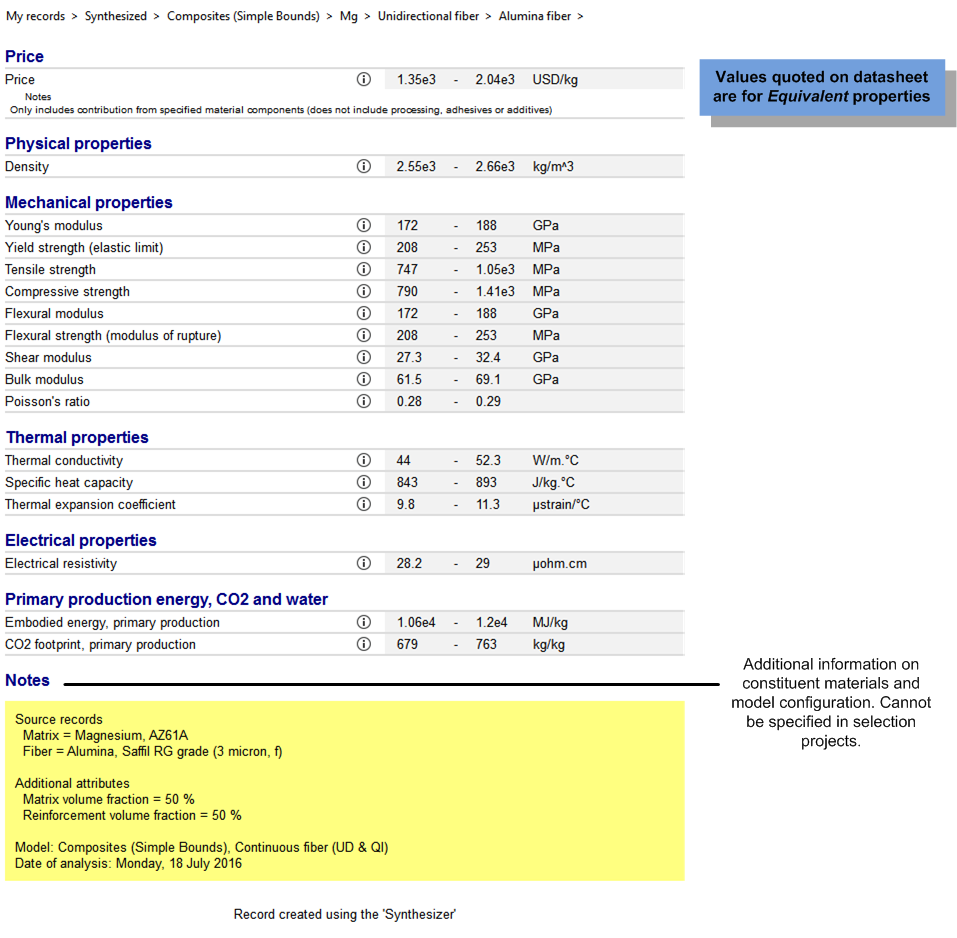
The Composites (Simple Bounds) model predicts the performance of continuous fiber-reinforced and particulate-filled composites. These materials, which generally exhibit high specific strength and stiffness values, are frequently used in structural components in weight-critical applications.
In principle any two or more materials can be combined to produce a composite. In general terms, this involves adding a reinforcing filler, which may be in the form of continuous fibers, chopped fibers or particulates, to a matrix that forms a binding continuum around the filler. The aim in creating this type of structure is to utilize the benefits of both materials. For example, glass fiber reinforced plastic (GFRP) materials combine the high strength and stiffness of glass fibers with the toughness of a polymer matrix.
The model types within the Composite (Simple Bounds) model allow the upper and lower bounds in performance of two-component composite systems (one reinforcement and one filler) to be readily predicted and compared with conventional materials.

Click on Synthesizer on the
main toolbar and under ![]() Composites (Simple Bounds),
click on the required model type:
Composites (Simple Bounds),
click on the required model type:
For Continuous Fiber (UD & QI), in the Fiber orientation list, select Unidirectional or Quasi-isotropic reinforcement form.
For Short Fiber Composites, in the Fiber orientation list, select Aligned or Random reinforcement form.
To select a Matrix and reinforcement Fiber material, click . This displays the full MaterialUniverse tree for the active database. Browse the tree, highlight the material of interest, and click OK select.
Note: The performance of particulates and fibers are frequently higher than the properties of the associated bulk material. As a result it is important, where appropriate, to select materials for the reinforcement from the 'Fibers and particulates' MaterialUniverse folder.
Specify the reinforcement Fiber volume fraction for the composite. This can be entered as either:
When a range is specified, the number of volume fractions also needs to be specified in the Number of values box.
Specifying a list or range enables a family of composites to be evaluated.
Note: The maximum reinforcement volume fraction that can be realistically achieved is 70%, hence this is the upper bound that a user can specify.
For short fiber composites, enter the Fiber aspect ratio (s) (s = fiber length / fiber diameter). The default value is 50.
In the Matrix and Fiber boxes, type an abbreviated name. For example, if the source matrix record is Magnesium, type Mg. These are used to create the record names for the new composite materials.
The synthesized records can be plotted on a chart for easy comparison with existing materials in the database.
